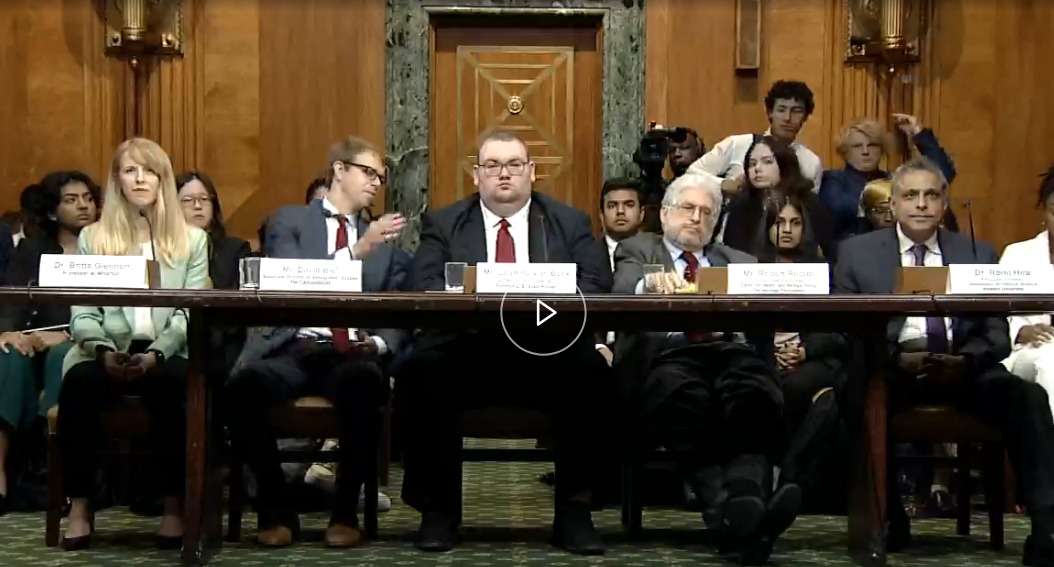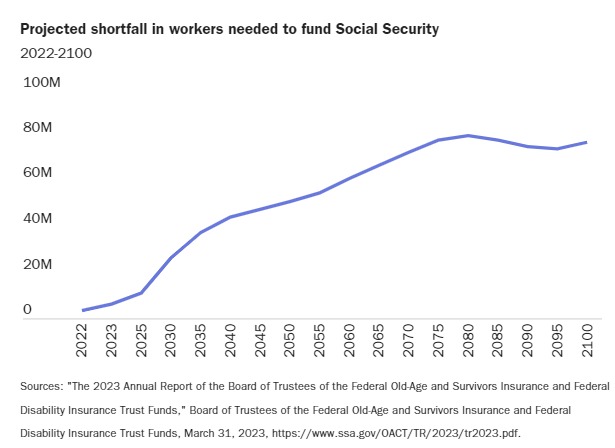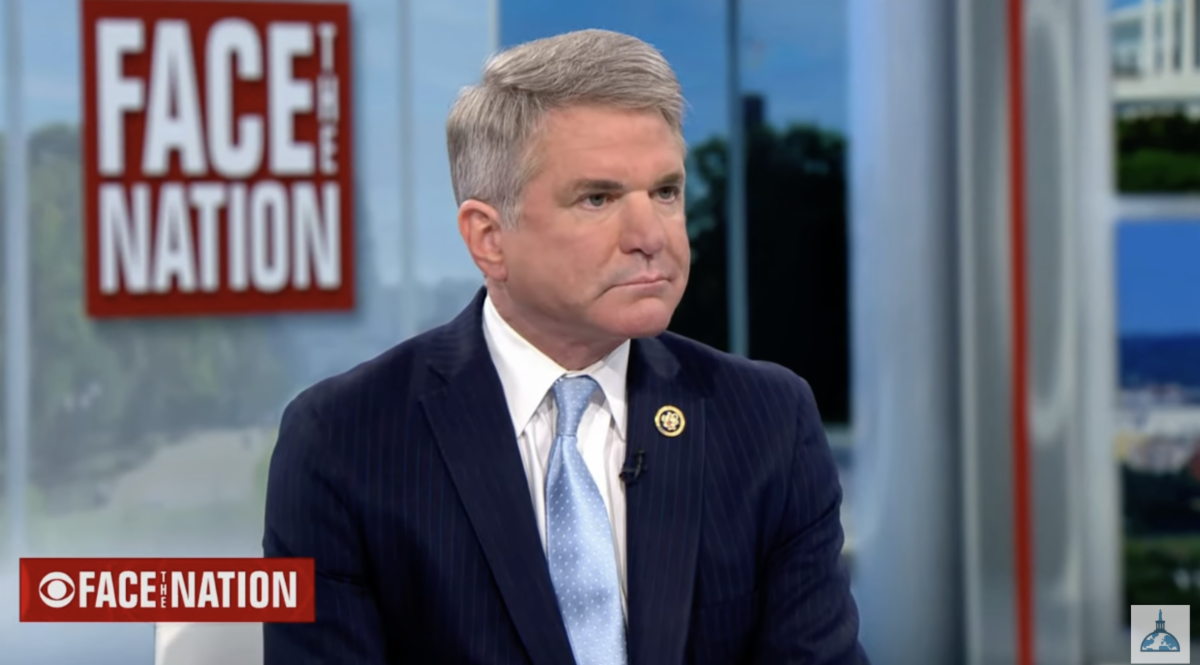Senate Budget Committee Hearing "Unlocking America's Potential: How Immigration Fuels Economic Growth and Our Competitive Advantage"
 The Senate Budget Committee held a hearing on "Unlocking America's Potential: How Immigration Fuels Economic Growth and Our Competitive Advantage" on Wednesday, September 13, 2023. Senators discussed concerns from their constituents regarding unprecedented workforce shortages and border security. Policy experts highlighted the positive fiscal and economic impacts of immigration and the need for improvements to the legal immigration system, in addition to reforms that will help immigrants who are already here to reach their full economic potential. Everyone who engaged in the discussion agreed that the US immigration system is broken and in need of reforms.
The Senate Budget Committee held a hearing on "Unlocking America's Potential: How Immigration Fuels Economic Growth and Our Competitive Advantage" on Wednesday, September 13, 2023. Senators discussed concerns from their constituents regarding unprecedented workforce shortages and border security. Policy experts highlighted the positive fiscal and economic impacts of immigration and the need for improvements to the legal immigration system, in addition to reforms that will help immigrants who are already here to reach their full economic potential. Everyone who engaged in the discussion agreed that the US immigration system is broken and in need of reforms.
The official Senate page for the hearing contains a video of the hearing and written opening statements.
Below are some notable statements from the hearing.
David Bier, Associate Director of Immigration Studies with the CATO Institute explained challenges that the US economy will face due to declining population and labor force, for which the best solution is improved pathways of legal immigration.
 “The most critical challenge facing the United States today is its declining population growth rate. The U.S. population is growing slower than at any point in its history. Moreover, in 2022, international migration accounted for 80 percent of the meager 0.4 percent population growth. Without immigration, the U.S. population will start to decline by the 2030s. Already in 2022, about half of all the counties in the United States saw declining populations,” said Bier.
“The most critical challenge facing the United States today is its declining population growth rate. The U.S. population is growing slower than at any point in its history. Moreover, in 2022, international migration accounted for 80 percent of the meager 0.4 percent population growth. Without immigration, the U.S. population will start to decline by the 2030s. Already in 2022, about half of all the counties in the United States saw declining populations,” said Bier.
“The country has already seen how population decline will manifest in the future. Major cities saw significant outmigration in the 1960s and 1970s before they stabilized and rebounded in the 1990s and 2000s, largely thanks to new immigrants. The outmigration led to housing vacancies and job losses, which contributed to increased crime, and the in-migration went hand in hand with lower crime and more business creation,” added Bier.
“Workforce growth has fallen by 65 percent from the 1960s to the most recent decade. It fell faster among those workers without a college degree. From 1995 to 2022, immigrants and their children accounted for 70 percent of labor force growth, and over the last two years, immigrants accounted for 100 percent of the increase in the working-age population. Without immigrants, the working-age population will fall by about 6 million in the next two decades. The total U.S. population would decline without any immigration by 2040,” said Bier.
Bier also highlighted the positive net fiscal impact of immigration and the need for more workers to keep social security afloat.
 “The costs of labor force decline are huge. The ratio of workers to retirees has plummeted since the 1960s, and the Social Security Trustees now estimate that Social Security will be short nearly 35 million workers to fund the system in the 2030s. It will have to cut benefits by at least 23 percent in 2034, if not earlier. The situation will not improve after that with benefit cuts reaching 30 percent and the shortfall in workers hitting 80 million by 2080,” said Bier.
“The costs of labor force decline are huge. The ratio of workers to retirees has plummeted since the 1960s, and the Social Security Trustees now estimate that Social Security will be short nearly 35 million workers to fund the system in the 2030s. It will have to cut benefits by at least 23 percent in 2034, if not earlier. The situation will not improve after that with benefit cuts reaching 30 percent and the shortfall in workers hitting 80 million by 2080,” said Bier.
“The present value cost of this worker shortage to U.S. retirees is about $24 trillion…The Federal Reserve Board of Governors expects that the decline in population growth will cause economic growth to decline throughout OECD member countries, including the United States, increasing the burden of the U.S. debt… The Congressional Budget Office (CBO) found in 2013 that comprehensive immigration reform would have 'a net savings of about $175 billion over the 2014–2023 period” and “would decrease federal budget deficits by about $700 billion (or 0.2 percent of total output) over the 2024–2033 period.' The CBO stated that there would be about another $300 billion in savings from the indirect economic effects of more workers,” added Bier.
Bier also commented on the relationship between workforce shortages and inflation.
“Throughout the current labor shortage, especially in 2021 and 2022, U.S. consumers were acutely aware of the interaction between workforce shortages and higher inflation every time they faced delays and higher prices at restaurants, retailers, and online. Currently, U.S. nonfarm employers have about 9 million open jobs, and over the last two and a half years, this number has averaged about 10 million. Every single month after January 2021 had more job openings than any month before it, back to the start of the job openings data series in the year 2000. Filling these jobs would have increased U.S. gross domestic product by about $2 trillion. This additional production of goods and services that consumers want is the reason that new workers reduce inflation, not because they lower wages. Of course, any individual worker benefits if they alone receive a monopoly over an area of business, but monopolies hurt everyone else, and when applied to the entire economy, this type of economic policy harms everyone, including those who receive ‘protection,’” he said.
In addition, Bier called for the creation of methods for immigrants who live in the US and have no pathways to obtain work authorization to earn work permits, citing how solutions such as DACA have been succesful in increasing economic contributions for the limited number of individuals who qualify.
“For some immigrants, the legal obstacle is that they are in the United States without authorization. For others, the obstacle is that their status does not authorize employment. These statuses include student visa holders and spouses and children under age 21 on some employer-sponsored temporary visas. There is no reason to favor forced unemployment for these people. Some people with statuses that limit their work opportunities work illegally anyway. However, employment authorization significantly increases their wages and productivity by allowing them to work the best job for their skills. Illegal employment status lowers the wages of identical workers by 13 to 24 percent. Similarly, some immigrants have a temporary status that limits their ability to start businesses or move up in their careers because the status is tied to a particular employer’s petition. This reduces their earnings and productivity by a similar amount. After Deferred Action for Childhood Arrivals (DACA) was implemented, for instance, immigrants affected by the quasi-legalization effort significantly increased their high school attendance and graduation, reducing the citizen-noncitizen graduation gap by nearly 40 percent. Partly as a result, by 2020, DACA recipients had doubled their earnings after receiving DACA. But because DACA is a temporary status, the effect is more limited than a permanent status,” said Bier.
Dr. Britta Glennon, Assistant Professor of Management at the Wharton School of the University of Pennsylvania, discussed how restrictive US legal immigration policies are moving jobs and investment out of the US economy and towards our competitors, putting the US at a competitive disadvantage.
“Our restrictive immigration policies have already motivated companies to move jobs and investment out of the U.S. For example, my work shows that the 2004 reduction in the H-1B visa cap led U.S. multinational companies to move tens of thousands of jobs to the subsidiaries that they operate abroad – both at existing subsidiaries and by opening brand new ones. In other words, the U.S.’s restrictive immigration policies sent jobs and investment to other countries—especially China, India, and Canada— instead. On the other hand, evidence also shows that welcoming migrants can increase domestic investment. For instance, William Olney and Dario Pozzoli found that an influx of refugees led to firm level onshoring of investment. In short, policymakers should consider that restrictive immigration policies implemented to protect U.S. jobs are actually likely to have the unintended consequence of pushing U.S. business investment abroad,” said Glennon.
“The U.S.’s outdated immigration laws hurt our competitiveness and economic dynamism, sending jobs, startups, investment, and innovation to countries that do recognize the economic benefits that immigrants bring,” added Glennon.
Laurens van Beek, a Software Developer with Integrated DNA Technologies, discussed how even though he came to the US legally from The Netherlands as a child with his parents, acquired a STEM degree, and worked on life-saving technology after college, he was unable to obtain an H-1B visa after three attempts and was was ultimately forced to self deport. He explained that his parents have also faced travel issues even though they have followed all the rules of the immigration system under their small business visas and have employed over 30 Americans. His story highlights another aspect of the dysfunctionality and economic inefficiency of the US immigration system.
“Without congressional action that creates a clear, attainable pathway for people like me to obtain permanent residency, our country will continue to waste its investments, by forcing thousands of American raised and educated children to leave every year. There are bipartisan solutions such as the America’s Children Act, led by Senator Padilla and Senator Rand Paul. This bill would permanently end the problem of aging out and ensure that children like me who are raised and educated with a documented status receive a clear opportunity to apply for permanent residency. This legislation would create the reality that most Americans assume already exists,” said van Beek.
The testimonies and discourse throughout the hearing revealed many of the inefficiencies of the US immigration system and the benefits that can be achieved through sensible reforms that help to increase immigrant contributions and improve border security. As the cost of inaction by lawmakers on these issues continue to increase, they should delay no further in implementing bipartisan solutions.
Written statements including research and data from committee members:
Chairman Sheldon Whitehouse (D - RI)
https://www.budget.senate.gov/download/091323-whitehouse-opening-statement
Ranking Member Chuck Grassley (R - IA)
https://www.budget.senate.gov/download/091323-grassley-opening-statement
Senator Alex Padilla (D - CA)
https://www.budget.senate.gov/download/091323-padilla-opening-statement
Written statements from witnesses:
Dr. Britta Glennon
Assistant Professor Of Management, Wharton School Of University Of Pennsylvania, &
Faculty Research Fellow, National Bureau of Economic Research
https://www.budget.senate.gov/download/britta-testimony-913
Mr. David Bier
Associate Director Of Immigration Studies
Cato Institute
https://www.budget.senate.gov/download/bier-testimony-913
Mr. Laurens Van Beek
Software Developer And Former U.S. Visa Holder
https://www.budget.senate.gov/download/l-van-beek-testimony-913
Mr. Robert Rector
Senior Research Fellow
Center for Health and Welfare Policy
The Heritage Foundation
https://www.budget.senate.gov/download/rector-testimony-913
Dr. Ronil Hira
Associate Professor
Department of Political Science
Howard University
https://www.budget.senate.gov/download/ronil-testimony-913








